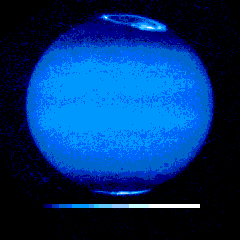This is an image of the aurora of Jupiter.
Click on image for full size
NASA
Jupiter's Aurora
Jupiter's aurora is a very powerful source of energy. The power dissipated in Jupiter's atmosphere as a result of the aurora is much more than that dissipated in Earth's atmosphere (about 1000 MegaWatts). Some scientists estimate it at a million MegaWatts, which is comparable to the power used by a large city of 10,000 MegaWatts. This energy can sometimes have a significant impact on the atmosphere.
Like the scene of a crime, the aurora of Jupiter is still being studied by scientists to gain complete understanding. This means that not all the evidence can yet be put together to tell a complete story.
Unlike the terrestrial aurora, the Jovian aurora is thought to come from two sources, Field-Aligned currents (FAC's) from the moon Io, and from currents carrying particles from somewhere deeper in Jupiter's magnetotail.
The streams of particles responsible for the aurora are thought to generate a type of radio emission called "DAM". On Earth, "Hiss" is thought to occur when particles are being forced into the auroral zone. Jupiter's magnetosphere is far different from the Earth's, so scientists studying the aurora of Jupiter look for DAM and other radio signals as proof of how the aurora is generated.
You might also be interested in:
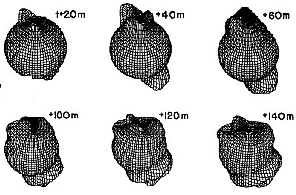
This figure shows the effect of the aurora on the atmosphere. When FAC's enter the atmosphere and create the aurora, they warm the atmosphere impulsively. This impulse travels throughout the atmosphere
...more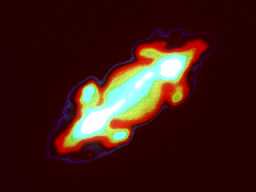
Radio signals are a signature of activity within the magnetosphere. There are many kinds of radio waves in the Jupiter environment. These are: DIM - the name for radio waves which have a wavelength of
...more
Jupiter's magnetosphere is practically all plasmasphere. Jupiter's magnetosphere is filled with plasma. Most of the plasma comes from the donut-shaped cloud (torus) of material from Io. Besides ions and
...more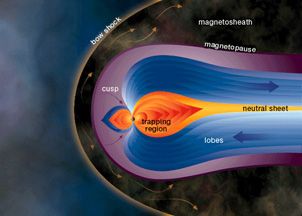
Jupiter's magnetosphere is a unique object in the solar system. It is the biggest object in the entire solar system. Not only is it big enough to contain all of Jupiter's moons, but the sun itself could
...more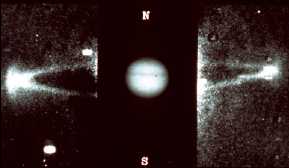
A satellite which has an atmosphere, such as Jupiter's moon Io, and which also is inside a magnetosphere (unlike the Earth's moon), will leave a cloud of particles behind as it orbits the planet. This
...more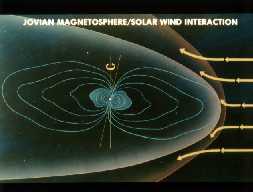
Jupiter's magnetosphere is very pointed and bullet-shaped, as shown in this picture, because of the nature of how it is created. The magnetosphere has many parts, such as the bow shock, magnetospheath,
...more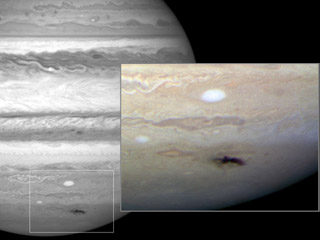
On the night of July 19, 2009, Anthony Wesley noticed a dark splotch on Jupiter that hadn't been there before. Wesley, an amateur astronomer in Australia, had discovered the remnants of a huge impact on
...more


